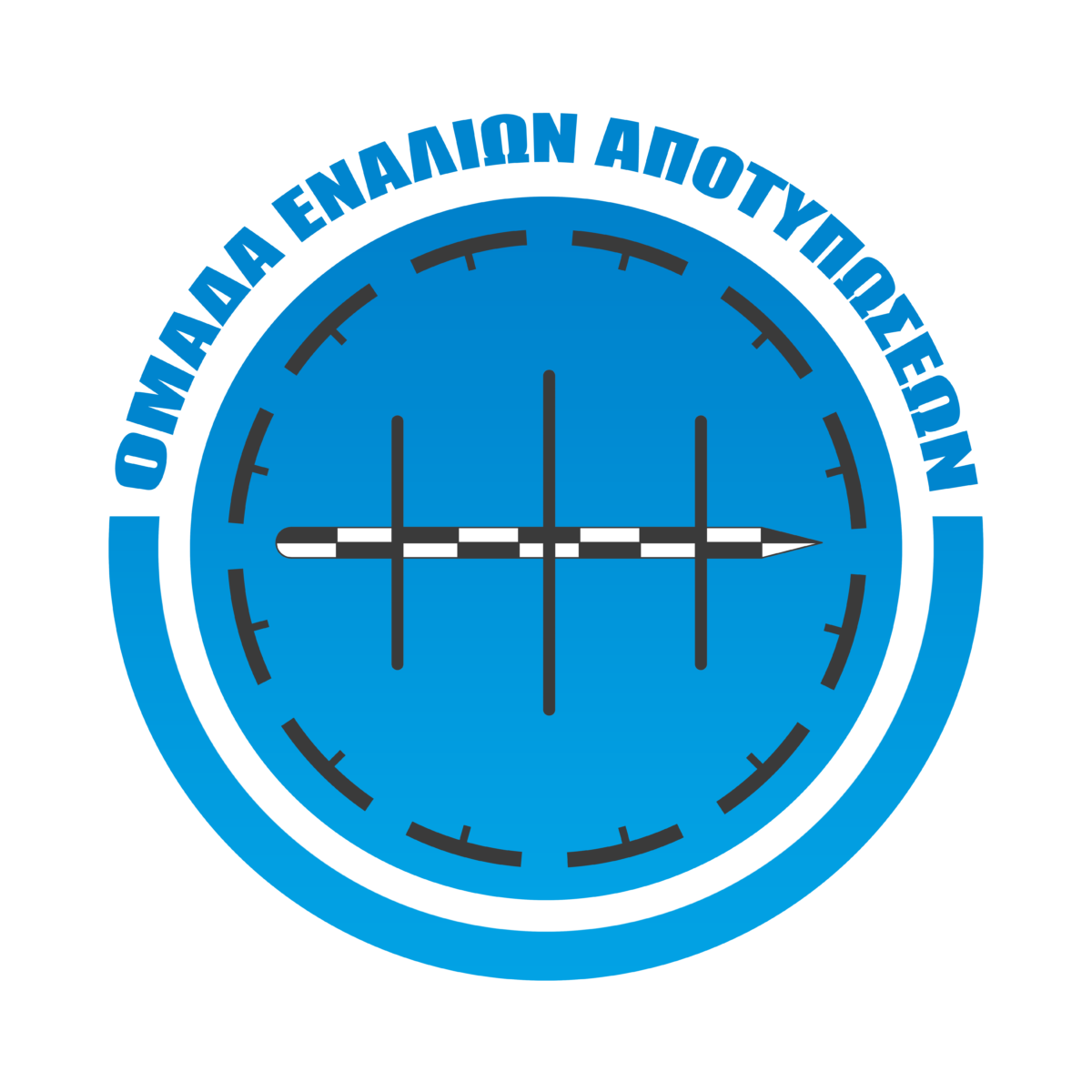On the nights of 28th and 29th of March 1941, the Navy lost a salvage tugboat, the MIMIS when it was hit by a mine. However, the loss was overshadowed by the German invasion just two days later.
The vessel was built in 1888 at the John Readhead & Co. shipyards in South Shields, England on behalf of the British company, William & Thomas Jolliffe, which had operated in the tugboat industry for 36 years. Following the corporate tradition, it was named the JANE JOLLIFFE to honour one of the female members of the Joliffe family. It had a total capacity of 235 GRT and dimensions of 40.53 x 6.85 x 3.89 metres. It had a three-cylinder triple-expansion steam engine which delivered 101 rated horsepower and a maximum speed of 12 knots. The JANE JOLLIFFE was distinguishable by its two tall funnels. In 1908, management of the JANE JOLLIFFE, along with five other vessels, was taken over by the Liverpool based company, Alexandra Towing Co. Ltd.
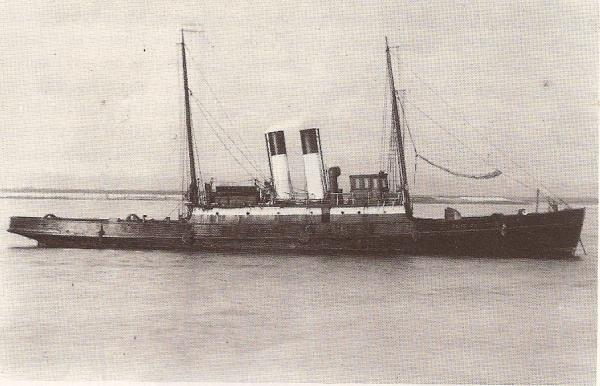
JANE JOLLIFFE in its original configuration.
In 1913, it was sold to the French company Société Provençale de Remorquage and renamed the PHOCÉEN. In January 1915, it was commissioned by the French Navy and was sent to serve in Thessaloniki. After the end of World War I, the PHOCÉEN was returned to its owners and in 1920 it was transferred to the Société Nationale de Sauvetage et de Remorquage “France” and refitted as a salvage tugboat. It was also equipped with ten water pumps capable of delivering 560 tonnes of water per hour. One of the funnels was removed at this time. Two years later, management was transferred to the Union Française et Maritime, which had its headquarters in Marseilles.
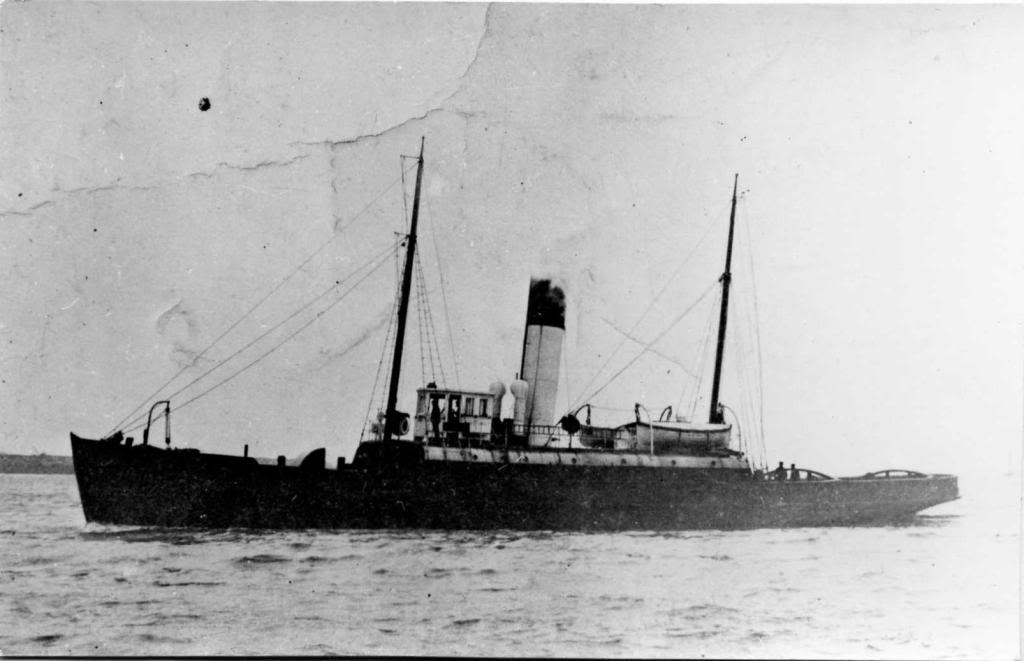
JANE JOLIFFE after the second funnel was removed.
In 1925, the PHOCÉEN was purchased by the company owned by George K. Striggou (Kranidi, 1878-Athens, 1956), who was a businessman with extensive commercial interests. A former bank employee, he became the co-founder of Strigkou-Empirikos Bank. Among other things, he founded a cosmetics company, an oil refinery, a shipping company and participated in a number of other firms. He was also heavily involved in politics. Strigkos was elected mayor of Piraeus in 1914. In 1926, he was elected a Minister of Parliament and two years later he was appointed Senator. In January 1926, the tugboat was renamed the MIMIS under a Greek flag and given the number 805 in the Piraeus Register. It is recorded as having a total capacity of 276 tons and a net of 53. The vessel’s arrival in Piraeus was announced in the daily press: “From Marseilles today sailed to our port the tugboat/salvage vessel MIMIS… purchased by Mr G. Striggou for £2,500. It is 300 tonnes, with the power of 730hp, 6 pumps of 400 tonnes per hour, 300 miles of cordless diving and submersible welding equipment. As far as we know, the tugboat has not yet been acquired by the Port of Piraeus.” At that time maritime rescue vessels were scarce and shipping was empirical, so diversions were extremely frequent. MIMIS was a valuable asset. Apart from the SAINT GEORGIOS, owned by Vernikos Tugs & Salvage Co. (a company still in existence today), it was the only other major Greek salvage tugboat and it participated in dozens of rescue and salvage operations. For example, in February 1929, G. Strigkos purchased the wreck of the steamship ARIADNI for £700. It had sunk at the entrance to the port of Mytilene on the island of Lesvos. MIMIS rushed there to salvage the vessel which was carrying 200 tonnes of wheat. In February 1929, the passenger ship VOLOS sank at Amouliani, Mount Athos. The MIMIS salvaged it after just one day’s work. It also took part in the successful salvage of the passenger steamer MYKALI, which had run aground on the island of Othonoi (north west of the island of Corfu) in May 1930. Moreover, in February 1931, it participated in the efforts to rescue the Italian steamer CAMPIDOGLIO in Bourgas, Bulgaria. However, the financial crisis of 1929 created major problems for G. Strigkou’s business interests. In a reorganisation effort, ownership of the MIMIS was transferred in 1930 to “Strigon House S.A.” in exchange for two hundred thousand drachmas.
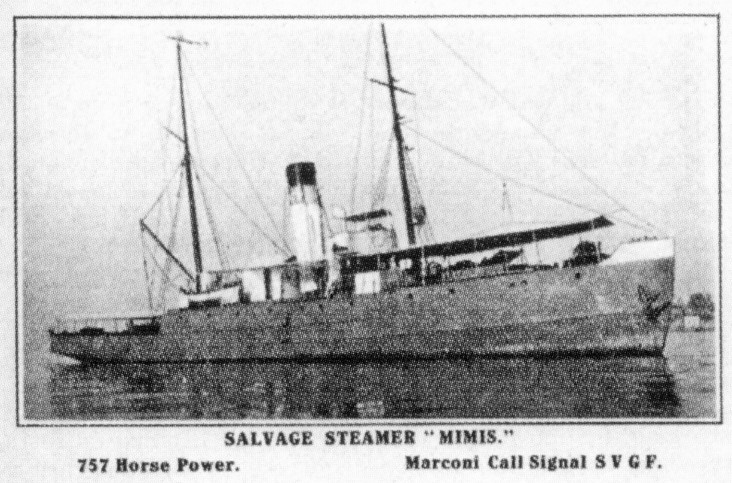
The MIMIS.
On the 28th of October 1940, the MIMIS was seized in Thessaloniki by the Greek government, equipped and incorporated into the Royal Hellenic Navy as an auxiliary vessel. On the 17th of December 1940, the gunship IONIA became stranded on the way from Piraeus to Messolonghi, but was detached two days later with the help of the MIMIS. It was then deployed to Naval Defense Area 1, which had its headquarters in Patras, to patrol the defensive minefield that prevented access to the Patraikos Gulf.
After February 1941, the MIMIS was transferred to the command of the Naval Defense Area 3, which was based in Piraeus. In late March, on the eve of the Battle of Matapa, information referring to a possible attack on Piraeus by Italian torpedo boats was received by G.E.N. (the Royal Hellenic Navy General Staff). Among the measures taken by NDA/3, was the organization of special patrols. The MIMIS participated in the first patrol of the boundaries of the Aegina-Fleves minefield from the evening of March the 27nd until the next morning. According to the secret order K 27/4332 of the Royal Hellenic Navy General Staff, on the 23rd of August 1940, a plan to extend the minefield from Cape Tourlos on the island of Aegina, Saronic Gulf to Fleves (a small island directly to the west of Aegina) was ordered. On the day the declaration of war was given by G.E.N., the executive order to lay the minefield was given. Consequently, the Vickers and Moraitis mines were sown on the nights of 29th and the 30th of October by the destroyers PANTHER, EAGLE, IERAX and HYDRA, as well as the lighthouse boat ORION, under the protection of destroyers B. GEORGE, LEON and SPETSES. However, because the mine-laying patterns were irregular, two more attempts had to be made by Torpedo and Mine Command in order to compensate for the gaps.
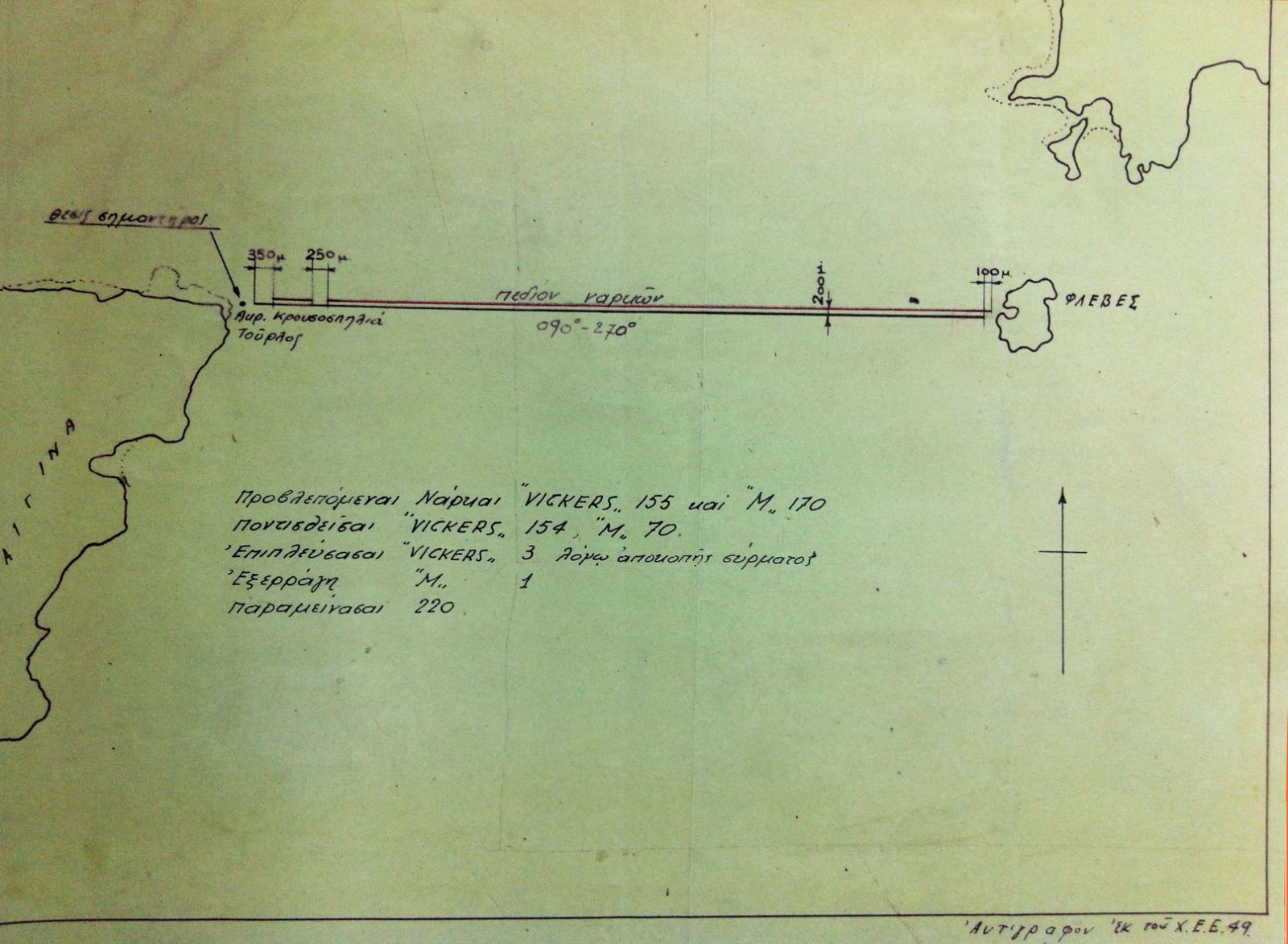
Plan of the Aegina-Fleves minefield. (HNH archive))
At 20.00 hrs on the evening of the 28th of March, the MIMIS left on its second patrol. Captain George Kiafa headed a crew of twenty-seven, fifteen of whom were from the Merchant Navy and twelve from the Royal Hellenic Navy. The crew chief of the P.N. [of the Navy?], reservist Ensign Elias Deyannis, had placed lookouts [had mounted search lights?] both on the bow and stern, while he remained on the bridge. Half an hour after midnight, the MIMIS was sailing on the north side of the minefield in a calm sea and with good visibility. The vessel was heading northeast in sight of Cape Tourlos on Aegina when a foreboding noise was heard. By miscalculation, the vessel had entered the minefield. Some crew members started rushing for the lifeboats when the vessel was suddenly shaken by a tremendous explosion. With the for’ard section engulfed in flames and the integrity of the hull fatally compromised, the MIMIS sank within three minutes, leaving no time to abandon ship with any semblance of order. Of the twenty-seven crew members, only five made it to a lifeboat, with one of them later ending up at the Piraeus Naval Hospital. Cast adrift, the lifeboat survivors first tried to reach the nearby coast of Aegina. Without oars, they failed. Instead, the prevailing northwest wind pushed them towards Fleves, where they arrived about 12.30 hrs the next day. They were picked up half an hour later by the torpedo boat AEGLI. One of the four survivors was Ensign Deyiannis. Later, he became a member of one of the resistance organizations during the occupation. He was executed in 1942 by the Germans after being arrested for sending radio signals to the Middle East.
Although some online sources report that the ship was recovered by the Germans and repaired in 1943 to become the anti-submarine vessel GA 23, the real situation is different. The shipwreck of the MIMIS is still exactly where it sank. It remains intact because it avoided the attention of salvaging crews which operated indiscriminately in the decades immediately succeeding the war.
In 1996, the professional scuba diver Costas Thoktaridis identified the shipwreck of the MIMIS as part of his research in the general area. The unfortunate salvage tug lies on the seabed at a depth of 70 to 80 metres. The extensive damage caused by the explosion is evident forward, but the remainder of the vessel is in good condition. Thirty metres from the wreck lies a cement mixer and part of the superstructure which either detached during the explosion or the descent to the bottom. The position of the shipwreck is clearly within the minefield, which confirms that its sinking was due to its Captain’s mistake.
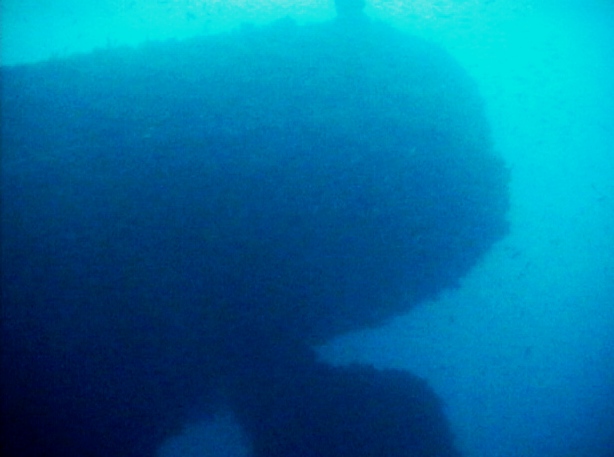
The stern of the MIMIS wreck. (K. Thoctaridis)
The Aegina-Fleves minefield was supposed to be a defensive measure. In reality, its devastating detonations claimed an equal number of friendly and enemy vessels. The second victim was the English cargo ship CLAN CUMMING. It inadvertently entered the minefield off Cape Turlos on the 15th April of 1941 and was sent to the bottom. Rather than remove the Greek minefield, the Germans maintained it during the occupation, and even placed their own minefields alongside it. On the southeastern edge of the minefield, near Fleves, the Italian destroyer CURTATONE sank on the 20th of May 1941, taking 94 of its crew with it to their deaths. A short distance from the MIMIS shipwreck lies the carcass of the German submarine U-133, which sank on the 14th of Marh 1942 when it also struck one of the mines.
References:
- Kavvadias Epaminondas, ‘The Naval War of 1940 as I lived it’, Ed.Pyrsos, Athens, 1950
- Bafouni Evangelias-Melios Nikos, ‘George Stringos’, Piraeus 2006
- Dounis Christos, ‘The shipwrecks in the Greek Seas 1951-2000’, Finatec S.A. Athens, 2001
- Phocas Dimitrios, Report on the action taken by Mr Vanni d’archirafi. Navy war 1940-44, historical Service H.R.N., Athens, 1953
- Lafon Roger, A l’appel des S.O.S., Journal de la Marine marchande, Paris, 1927
- Nicholson Tim, Take the Strain: The Alexandra Towing Co and the British Tugboat Business, 1833-1987, Liverpool, 1990.
- Patrouilleur PHOCÉEN I, marine forum, http://pages14-18.mesdiscussions.net
- Hellenic Navy Historical (HNH) Archive
- Piraeus Register
- Lloyd’s Register
[*] Ross J. Robertson is an Australian who has lived in Greece for the past thirty years. He has a BSc (Biology) and is an EFL teacher. He is the co-owner of two private English Language Schools and instructs students studying for Michigan and Cambridge University English Language examinations. He has written various English Language Teaching books for the Hellenic American Union (Greece), Longman-Pearson (UK) and Macmillan Education (UK). He published his debut novel (fiction/humour) entitled ‘Spiked! Read Responsibly’ in 2016. Moreover, he has written several spec screenplays and a number of newspaper articles, including an extensive series on the 75th anniversary of the WWII Liberation of Greece. A keen AOW and Nitrox diver, he is also a shipwreck and research enthusiast and has written features for UK Diver Magazine, US Diver and the Australian newspaper, Neos Kosmos. Ross continues to combine his expertise in English with his love of storytelling and local WWII history to produce exciting materials.
